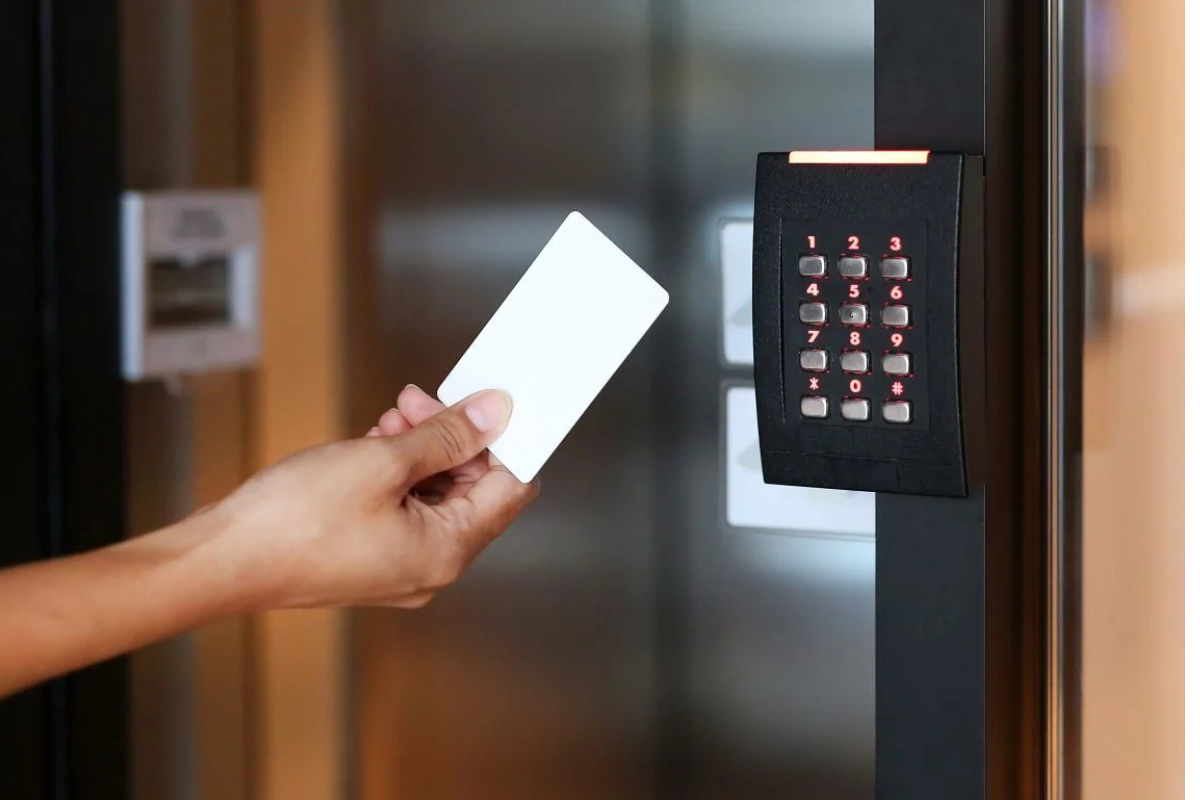
What is a door access control system?
A door access control system can be generally classified based on its operational framework or the kind of credential it employs.
By Organizational Framework:
- Standalone Systems:
- Oversee one door or several separate doors
- The reader and controller are frequently integrated into a single unit.
- Programming occurs directly on the device or through a USB connection.
- There is no centralized management or real-time logging for multiple doors.
- Ideal for:
- Small offices
- Single rooms
- Storage areas
- Networked (On-Premise) Systems:
- Multiple readers and controllers connect to a central server within the organization’s local network
- Managed by dedicated software installed on a local computer
- Offers centralized control, real-time monitoring, detailed audit trails, and integration capabilities
- Ideal for: Medium to large businesses, multi-floor buildings, factories
- Cloud-Based Access Control Systems:
- Credential data, permissions, and logs are stored and managed securely in the cloud
- Administrators can manage the system remotely via a web browser or mobile app
- Offers high scalability, automatic updates, easier integration with other cloud services (HR, visitor management), and reduced on-site IT maintenance
- Ideal for: Companies that operate in various locations, employ remote teams, or are in search of a versatile and low-maintenance option
By Credential Technology:
- Keycard/Fob Systems: Use physical cards or fobs (usually RFID) that are tapped or swiped
- Keypad/PIN Systems: Require users to enter a numeric code on a keypad
- Biometric Systems: Authenticate users based on unique physical characteristics (e.g., fingerprint, face, iris, palm vein).
- Mobile Credential Systems: Allow smartphones to act as credentials via Bluetooth or NFC.
Benefits of a door access control system:
- Enhanced Security: Prevents unauthorized persons from accessing restricted zones, thereby safeguarding assets, information, and personnel
- Centralized Control: Allows administrators to manage all access points from a single platform, easily granting or revoking access rights
- Detailed Audit Trails: Provides comprehensive logs of who entered where and when, crucial for security investigations and compliance
- Eliminates Keys:
Minimizes the security threats and expenses related to lost, stolen, or duplicated physical keys, as well as the necessity for rekeying.
- Flexible Access Levels: Allows different access permissions to be assigned based on roles, departments, or time schedules.
- Remote Management: Cloud-based systems enable administrators to manage access permissions instantly from any location with internet access
- Improved Efficiency: Streamlines entry/exit processes and can integrate with other systems like time attendance or visitor management
- Increased Safety: In emergencies, systems can be configured for instant lockdown or automatic unlocking (for emergency exits)
- What is an RFID access control system?

Add a review
Your email address will not be published. Required fields are marked *